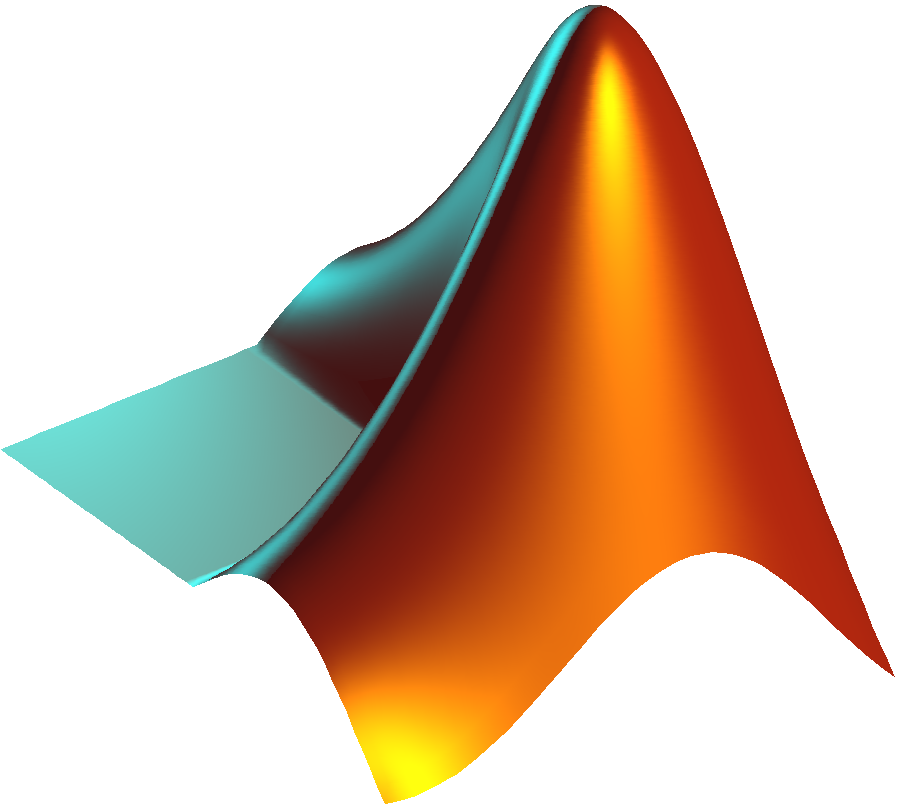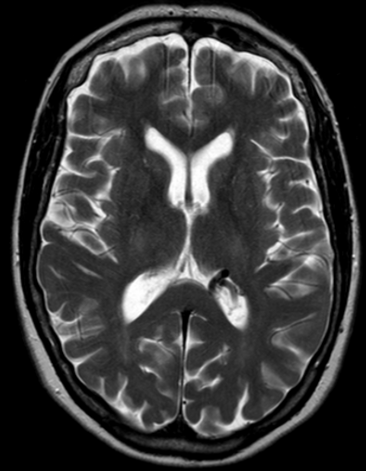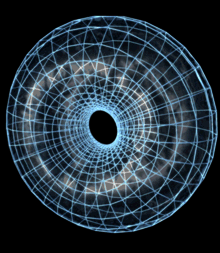Nonlinear Models of Physiological Systems
- C. Yeh, H. Young, C. Wang, Y. Wang, P. Lee, J. Kang, M.Lo*, "Quantifying Spasticity with Limited Swinging Cycles using Pendulum Test Based on Phase Amplitude Coupling," IEEE Trans Neural Syst Rehabil Eng, 2016. (* corresponding author)
Parameters derived from the goniometer measures in Pendulum test are insufficient in describing of the function of abnormal muscle activity in the spasticity. To explore a quantitative evaluation of muscle activation-movement interaction, we propose a novel index based on phase amplitude coupling (PAC) analysis with the consideration of the relations between movement and surface electromyography (SEMG) activity among 22 hemiplegic stroke patients. This study indicates the feasibility of using the novel indices based on the PAC in evaluation the spasticity among the hemiplegic stroke patients with less than 3 swinging cycles.
- M.-T. Lo, W.-y. Chiang, W.-H. Hsieh, C. Escobar, R. Buijs, and K. Hu, "Interactive effects of dorsomedial hypothalamic nucleus and time-restricted feeding on fractal motor activity regulation," Frontiers in Physiology, vol. 7, p. 174, 2016.
Here we report that 2-h food availability during the normal inactive phase of rats not only increases activity levels before the feeding period but also alters the temporal organization of motor activity fluctuations over a wide range of time scales from minutes up to 24 h. We demonstrate this multiscale alteration by assessing fractal patterns in motor activity fluctuations—similar fluctuation structure at different time scales—that are robust in intact animals with ad libitum food access but are disrupted under food restriction. In addition, we show that fractal activity patterns in rats with ad libitum food access are also perturbed by lesion of the dorsomedial hypothalamic (DMH)—a neural node that is involved in food anticipatory behavior. Instead of further disrupting fractal regulation, food restriction restores the disrupted fractal patterns in these animals after the DMH lesion despite the persistence of the 24-h rhythms.
- K. Hu, M.T. Lo*, C.K. Peng, Y. Liu, and V. Novak, "A Nonlinear Dynamic Approach Reveals a Long-Term Stroke Effect on Cerebral Blood Flow Regulation at Multiple Time Scales," PLoS Computational Biology, 8(7): e1002601, doi: 10.1371/ journal. pcbi. 1002601 2012 (* corresponding author)
In this study we propose a novel computational tool for cerebral autoregulation (CA) assessment that is based on nonlinear dynamic theory without the assumption of stationary signals. The results provide strong evidence that CA may be active in a much wider frequency region than previously believed and that the altered multiscale CA in different vascular territories following stroke may have important clinical implications for post-stroke recovery, and the nonlinear approaches without the assumption of stationarity are more sensitive for the assessment of the coupling of nonstationary physiological signals.
- M.-T. Lo, V. Novak, C.-K. Peng, Y.-H. Liu, and K. Hu, "Nonlinear Phase Interaction Between Nonstationary Signals: A Comparison Study of Methods Based on Hilbert–Huang and Fourier Transforms," Physical Review e, Vol. 79, No. 6, Jun. 2009
In this paper we systematically studied effects of nonstationarities on two phase analyses including (i) transfer function analysis (TFA) and (ii) multimodal pressure flow (MMPF) analysis. Three types of nonstationarities are examinated: (i) missing segments of data, (ii) linear and step-function trends embedded in data, and (iii) multiple chaotic oscillatory components at different frequencies in data. Examples in real physiological data (cerebral blood flow and blood pressure) are provided to show how nonstationarities can complicate result interpretation. We also proposed certain strategies that can be implemented in both methods to reduce the effects of nonstationarities.
- K. Hu, M.-T. Lo, C.-K. Peng, V. Novak, E. A. Schmidt, A. Kumar, and M. Czosnyka, "Nonlinear Pressure-Flow Relationship Is Able to Detect Asymmetry of Brain Blood Circulation Associated with Midline Shift," Journal of Neurotrauma, Volume 26, No. 2, Pages 227–233, Feb. 2009
Reliable and noninvasive assessment of cerebral blood flow regulation is a major challenge in acute care monitoring. This study assessed dynamics of flow regulation and its relationship to asymmetry of initial computed tomography (CT) scan using multimodal pressure flow (MMPF) analysis. We find that the MMPF method allows reliable assessment of alterations in pressure and flow relationship after traumatic brain injury (TBI). Moreover, mean pressure-flow phase shift is sensitive to the displacement of midline of the brain, and may potentially serve as a marker of asymmetry of cerebral autoregulation.
- M.-T. Lo, K. Hu, Y.-H. Liu, C.-K. Peng, and V. Novak, “Multimodal Pressure–Flow Analysis: Application of Hilbert–Huang Transform in Cerebral Blood Flow Regulation,” EURASIP Journal on Advances in Signal Processing, 2008: 785243.
In this paper we discuss a new technique “Multi-Modal Pressure Flow method (MMPF)” that utilizes Hilbert-Huang transformation to quantify dynamic cerebral autoregulation (CA) by studying interaction between nonstationary cerebral blood flow velocity (BFV) and blood pressure (BP). Also, we 1) present an overview of transfer function analysis (TFA) that is traditionally used to quantify CA; 2) describe the a MMPF method and its modifications; 3) introduce a newly developed automatic algorithm and engineering aspects of the improved MMPF method; and 4) review clinical applications of MMPF and its sensitivity for detection of CA abnormalities in clinical studies.
Complexity and nonlinear biomarkers
- C.-H. Yeh, M.-T. Lo*, and K. Hu, "Spurious cross-frequency amplitude–amplitude coupling in nonstationary, nonlinear signals.,"
 Physica A: Statistical Mechanics and its Applications, 2016.(* corresponding author)
Physica A: Statistical Mechanics and its Applications, 2016.(* corresponding author)
"Click to download source code and example."
Recent studies of brain activities show that cross-frequency coupling (CFC) plays an important role in memory and learning. Many measures have been proposed to investigate the CFC phenomenon, including the correlation between the amplitude envelopes of two brain waves at different frequencies — cross-frequency amplitude–amplitude coupling (AAC). In this short communication, we describe how nonstationary, nonlinear oscillatory signals may produce spurious cross-frequency AAC. Utilizing the empirical mode decomposition, we also propose a new method for assessment of AAC that can potentially reduce the effects of nonlinearity and nonstationarity and, thus, help to avoid the detection of artificial AACs. We compare the performances of this new method and the traditional Fourier-based AAC method. We also discuss the strategies to identify potential spurious AACs.
- M.-T. Lo, Y.-C. Chang, C. Lin, et al., "Outlier-resilient complexity analysis of heartbeat dynamics,"
 Scientific Reports, Vol. 5, 2015.
Scientific Reports, Vol. 5, 2015.
"Click to download source code and example."
Here we propose a new approach to estimate the complexity in a signal by analyzing the irregularity of the sign time series of its coarse-grained time series at different time scales. The method can reliably assess the complexity in noisy data while being highly resilient to outliers, and to analyze the human heartbeat recordings without removing outliers, the method is also able to detect a degradation of cardiac control in patients with congestive heart failure and a more degradation in critically ill patients with extracorporeal membrane oxygenator (ECMO), and predict the mortality of ECMO patients. These results indicate that the method may serve as a promising tool for monitoring cardiac function of patients in clinical settings.
- Y.-H. Lin, H.-C. Huang, Y.-C. Chang, C. Lin, M.-T. Lo*, et al., "Multi-scale symbolic entropy analysis provides prognostic prediction in patients receiving extracorporeal life support," Critical Care, Vol. 18, p. 548, 2014.(* corresponding author)
Extracorporeal life support (ECLS) can temporarily support cardiopulmonary function, and is occasionally used in resuscitation. Multi-scale entropy (MSE) derived from heart rate variability (HRV) is a powerful tool in outcome prediction of patients with cardiovascular diseases. Multi-scale symbolic entropy analysis (MSsE), a new method derived from MSE, mitigates the effect of arrhythmia on analysis. This paper evaluates the prognostic value of MSsE in patients receiving ECLS, and we find that the MSsE provides additional prognostic information in patients receiving ECLS.
- P.-H. Tsai, C. Lin, J. Tsao, P.-F. Lin, P.-C. Wang, N.-E. Huang, and M.-T. Lo*, "Empirical Mode Decomposition Based Detrended Sample Entropy in Electroencephalography for Alzheimer's Disease," Journal of Neuroscience Methods, 31 Jul. 2012; 210(2): 230–237 (* corresponding author)
In this study to resolve the non-stationarity of the sample entropy (SaEn) in EEG to improve the sensitivity, a new method that use empirical mode decomposition (EMD) for detrending is proposed. The dynamic complexity of EEG fluctuations is degraded by pathological degeneration, and EMD-based detrended SaEn provides an objective, non-invasive and non-expensive tool for evaluating and following Alzheimer's disease patients.
- Y.-L. Ho, C. Lin, Y.-H. Lin, and M.-T. Lo*, “The Prognostic Value of Nonlinear Analysis of Heart Rate Variability in Patients with Congestive Heart Failure—A Pilot Study of Multiscale Entropy,” PLoS One, Vol. 6, No. 4, Pages e18699, 2011. (* corresponding author)
The aim of this study is to investigate the prognostic value of parameters derived from multiscale entropy (MSE) in the patients with systolic heart failure. Patients with systolic heart failure were enrolled in this study. One month after clinical condition being stable, 24-hour Holter electrocardiogram was recording. MSE as well as other standard parameters of heart rate variability (HRV) and detrended fluctuation analysis (DFA) were assessed. The area under the MSE curve for scale 6 to 20 is not relevant to β-blockers and could further warrant independent risk stratification for the prognosis of CHF patients.
Cardiac Arrhythmia
- C.-Y. Lin, J. Silberbauer, Y.-J. Lin, M.-T. Lo, C. Lin, H.-C. Chang, et al., "Simultaneous Amplitude Frequency Electrogram Transformation (SAFE-T) Mapping to Identify Ventricular Tachycardia Arrhythmogenic Potentials in Sinus Rhythm," JACC: Clinical Electrophysiology, 2016. Referred to by Edward J. Ciaccio, "New Parameter for Detecting Isthmus Location in Ventricular Tachycardia Caused by a Re-Entrant Circuit."

Substrate ablation is useful for patients with scar-related hemodynamically unstable VT; however, the accuracy of different approaches remains inadequate, varying from targeting late potentials to full scar homogenization. In this study, sinus rhythm right ventricle/left ventricle endocardial and epicardial electrograms underwent Hilbert-Huang spectral analysis and were displayed as 3-dimensional SAFE-T maps. Arrhythmogenic potentials (AP) were defined by a cutoff value of 3.08 Hz mV using normal heart control subjects. Receiver-operating characteristics showed that VT isthmus sites were best identified using SAFE-T mapping (p < 0.001) as compared with bipolar and unipolar scar and late potential mapping with an optimal cutoff value of 3.09 Hz mV, allowing identification of 100% of the 34 mapped VT isthmuses, compared with 68% using late potentials. There was no significant difference between sinus rhythm and paced SAFE-T values. Abnormal SAFE-T areas involved about one-quarter of the scar total area.
- M.-T. Lo, L.-Y. Lin, W.-H. Hsieh, et al., "A New Method to Estimate the Amplitude Spectrum Analysis of Ventricular Fibrillation During Cardiopulmonary Resuscitation" Resuscitation, Vol. 84, Issue 11, Nov. 2013, Pages 1505–1511, Resuscitation highlights in 2013
Accurate ventricular fibrillation (VF) waveform analysis usually requires rescuers to discontinue cardiopulmonary resuscitation (CPR). However, prolonged "hands-off" time has a deleterious impact on the outcome. We developed a new filter technique that could clean the CPR artifacts and help preserve the shockability index of VF Methods. First, decomposing the raw data by empirical mode decomposition (EMD) into several intrinsic mode fluctuations (IMFs) and combining the dominant IMFs to reconstruct a new signal. Second, calculating each CPR cycle frequency from the new signal and fitting the new signal to the original corrupted ECG by least square mean (LSM) method to derive the CPR artifacts. The new algorithm could efficiently filter the CPR-related artifacts of the VF ECG and preserve the shockability index of the original VF waveform.
- Y.-J. Lin, M.-T. Lo#, C. Lin, et al., "Nonlinear Analysis of Fibrillatory Electrograms Similarity to Optimize the Detection of Complex Fractionated Electrograms During Persistent Atrial Fibrillation," Journal of Cardiovascular Electrophysiology, 2013 May;24(3):280-9,2013 (# equally first)
Currently, the identification of complex fractionated atrial electrograms (CFEs) in the substrate modification is mostly based on cycle length-derived algorithms. The characteristics of the fibrillation electrogram morphology and their consistency over time are not clear. The aim of this study was to optimize the detection algorithm of crucial CFEs by using nonlinear measure electrogram similarity. In persistent AF patients, a cycle length-based linear analysis could not differentiate culprit CFEs from bystanders. This study suggested that sites with a high level of fibrillation electrogram similarity at the CFE sites were important for AF maintenance.
- Y.-J. Lin, M.-T. Lo#, C. Lin, et al., "Prevalence, Characteristics, Mapping, and Catheter Ablation of Potential Rotors in Nonparoxysmal Atrial Fibrillation," Circulation: Arrhythmia Electrophysiology, 2013; 6: 851-858 (# equally first)
Identification of critical atrial substrates in patients with nonparoxysmal atrial fibrillation (AF) failing to respond to pulmonary vein isolation is important. This study investigated the signal characteristics, substrate nature, and ablation results of rotors during AF. Rotor-like re-entry with fibrillatory conduction was found in a limited number of patients with nonparoxysmal AF after pulmonary vein isolation. Those areas were characterized by rapid repetitive activity with a high degree of electrogram similarity.
- L.-Y. Lin, M.-T. Lo, P. C.-I. Ko, et al., “Detrended Fluctuation Analysis Predicts Successful Defibrillation for Out-of-Hospital Ventricular Fibrillation Cardiac Arrest,” Resuscitation, Vol. 81, No. 3, Pages 297–301, 2010
Repeated failed shocks for ventricular fibrillation (VF) in out-of-hospital cardiac arrest (OOHCA) can worsen the outcome. It is very important to rapidly distinguish between early and late VF. We hypothesised that VF waveform analysis based on detrended fluctuation analysis (DFA) can help predict successful defibrillation. We find that the VF waveform analysis based on DFA could help predict first-shock defibrillation success in patients with OOHCA. The clinical utility of the approach deserves further investigation.
Adaptive Data Analysis
- H.-W. Yang, S.-K Jeng, H.-W. V. Young, C. Lin, Y.-H. Wang, K. Hu, and M.-T. Lo*, "A Minimum Arclength Method for Removing Spikes in Empirical Mode Decomposition.,"
 IEEE
Access. (* corresponding author)
IEEE
Access. (* corresponding author)
"Click to download source code and example."
We propose a novel method, minimum arclength EMD (MA-EMD), to robustly decompose time series data
with impulse-like noises. The idea is to apply a minimum arclength criterion to adjust the knot positions
of impulses during the sifting process in EMD. In this way, the impulse-like artifact is extracted with the
first IMF, and the mode splitting effect of the latter decomposition is alleviated. Furthermore, when the
first IMF contains the desired information, we separate the spikes and the first IMF by adding a pair of
masking signals. For using this masking-aided MA-EMD (MAMA-EMD) method.
- Y.-H. Wang, K. Hu, and M.-T. Lo*, "Uniform Phase Empirical Mode Decomposition An Optimal Hybridization of Masking Signal and
Ensemble Approaches.,"
 IEEE
Access. (* corresponding author)
IEEE
Access. (* corresponding author)
"Click to download source code and example."
The Empirical Mode Decomposition (EMD) is an established method for analyzing nonlinear and nonstationary signals.
Many studies have shown that EMD is more effective and flexible than traditional decomposition methods such as the
Fourier transform. However, it is also known that the EMD may suffer from the mode mixing effect, which not only
causes aliasing in the time-frequency distribution but also obscures the physical meanings of the input signals.
Two variants, the noise-assisted EMD and the masking EMD, have been proposed to mitigate the mode mixing. These two
approaches, on the one hand, attain superior performance in analyzing the real world signals but, on the other
hand, may introduce two side effects: the mode splitting and the residual noise, leading to distorted waveforms or,
even worse, the physically incorrect artifacts. To resolve the two potential problems and improve the decomposition
performance, we analyzed the mode splitting and the residual noise effects extensively and then proposed the
uniform phase EMD (UPEMD) in the study. We demonstrated that the UPEMD not only resolves the mode mixing problem in
the EMD, but also, more importantly, removes the unphysical artifacts, for which were proved by a comprehensive
theoretical explanation of the UPEMD and relevant simulations. We look forward to that this work could pave a way
for further insights into the theoretical foundation of EMD (and its disturbance-assisted versions).
- H.-W. V. Young, K.-H. Hsu, V.-T. Pham, T.-T. Tran, and M.-T. Lo*, "A new approach to sparse decomposition of nonstationary signals with multiple scale structures
using self-consistent nonlinear waves.,"
 Physica A: Statistical Mechanics and its Applications, vol. 481, pp. 1-10, 2017. (* corresponding
author)
Physica A: Statistical Mechanics and its Applications, vol. 481, pp. 1-10, 2017. (* corresponding
author)
"Click to download source code and example."
A new method, called "Self-consistent Nonlinear Sparse Decomposition", is proposed and tested. Based on
self-consistent nonlinear wave equations with self-sustaining physical mechanisms in mind, the new method is
adaptive and particularly effective for dealing with synthetic signals consisting of components of multiple time
scales. By formulating the method into an optimization problem and developing the corresponding algorithm and tool,
we have proved its usefulness not only for analyzing simulated signals, but, more importantly, also for real
clinical data.
- Y.-H. Wang, C.-H. Yeh, H.-W. V. Young, K. Hu, and M.-T. Lo*, "On the computational complexity of the
empirical mode decomposition algorithm." Physica A: Statistical Mechanics and its Applications.
400(2014), 159-167. April 2014.(* corresponding author)
"Click to download source code and example."
It has been claimed that the empirical mode decomposition (EMD) and its improved version the ensemble EMD (EEMD)
are computation intensive. In this study we will prove that the time complexity of the EMD/EEMD, which has never
been analyzed before, is actually equivalent to that of the Fourier Transform. Numerical examples are presented to
verify that EMD/EEMD is, in fact, a computationally efficient method.
- B. Pittman-Polletta, W.-H. Hsieh, S. Kaur, M.-T. Lo, and K. Hu, "Detecting Phase-Amplitude Coupling
with High Frequency Resolution using Adaptive Decompositions." Journal of neuroscience methods. Vol.
226, Pages 15-32, April 2014.
Phase-amplitude coupling (PAC)--the dependence of the amplitude of one rhythm on the phase of another,
lower-frequency rhythm - has recently been used to illuminate cross-frequency coordination in neurophysiological
activity. An essential step in measuring PAC is decomposing data to obtain rhythmic components of interest. Current
methods of PAC assessment employ narrowband Fourier-based filters, which assume that biological rhythms are
stationary, harmonic oscillations. However, biological signals frequently contain irregular and nonstationary
features, which may contaminate rhythms of interest and complicate comodulogram interpretation, especially when
frequency resolution is limited by short data segments. To better account for nonstationarities while maintaining
sharp frequency resolution in PAC measurement, even for short data segments, we introduce a new method of PAC
assessment which utilizes adaptive and more generally broadband decomposition techniques - such as the empirical
mode decomposition (EMD). To obtain high frequency resolution PAC measurements, our method distributes the PAC
associated with pairs of broadband oscillations over frequency space according to the time-local frequencies of
these oscillations.
- M.-T. Lo, L.-Y. Lin, W.-H. Hsieh, et al., "A New Method to Estimate the Amplitude Spectrum Analysis of
Ventricular Fibrillation During Cardiopulmonary Resuscitation." Resuscitation, Vol. 84, Issue 11, Nov.
2013, Pages 1505–1511
Accurate ventricular fibrillation (VF) waveform analysis usually requires rescuers to discontinue cardiopulmonary
resuscitation (CPR). However, prolonged "hands-off" time has a deleterious impact on the outcome. We developed a
new filter technique that could clean the CPR artifacts and help preserve the shockability index of VF METHODS: We
analyzed corrupted ECGs, which were constructed by randomly adding different scaled CPR artifacts to the VF
waveforms. A newly developed algorithm was used to identify the CPR fluctuations. The algorithm contained two
steps. First, decomposing the raw data by empirical mode decomposition (EMD) into several intrinsic mode
fluctuations (IMFs) and combining the dominant IMFs to reconstruct a new signal. Second, calculating each CPR cycle
frequency from the new signal and fitting the new signal to the original corrupted ECG by least square mean (LSM)
method to derive the CPR artifacts. The estimated VF waveform was derived by subtraction of the CPR artifacts from
the corrupted ECG. We then performed amplitude spectrum analysis (AMSA) for original VF, corrupted ECG and
estimated VF.
- M.-T. Lo, P.-H. Tsai, P.-F. Lin, C. Lin, and Y.-L. Hsin, "The Nonlinear and Nonstationary Prosperities
in EEG Signals: Probing the Complex Fluctuations by Hilbert–Huang Transform," Advances in Adaptive Data
Analysis, Vol. 1, No. 3 Pages 461–482, 2009
In this paper, HHT is introduced to analyze the alpha waves of human's electroencephalography (EEG), which seemly
oscillate regularly between 8 and 12 Hz in healthy subject but getting irregular or disappeared in different
demented status. Furthermore, conventional time–frequency analyses are adopted to collate the results from those
methods and HHT.






Follow Me:
If you are interesting to the updated publish, you can find me on google scholars